Is it possible to live frugally… AND eat real food? Yes! Here’s how to eat healthy on a budget when finances are tight!
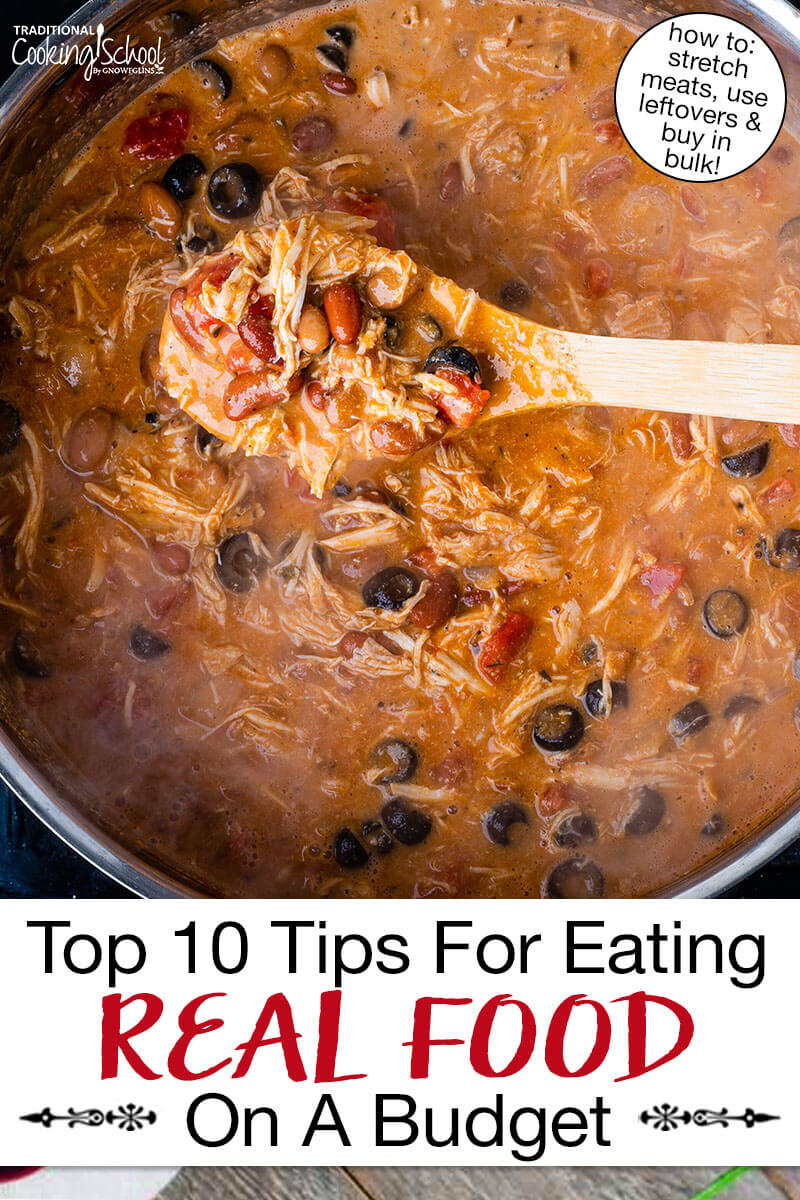
Trying to eat healthy on a budget?
Years ago, I answered your how to eat healthy on a budget questions in not one, but two podcast episodes — one on #AskWardee and one on Know Your Food with Wardee.
Now, as food prices go up in the United States, many of us are taking a step back to reevaluate our food budgets. How can we do better, and what can we do without? I decided it was time to dust off, combine, and update those original posts.
Below you will find the original podcast episodes (#AskWardee 045 and KYF 141) in video and audio format, plus my updated answers and food budget tips written out for those of you who prefer the transcript.
Table Of Contents
Food Budget Tips
Subscribe to #AskWardee on iTunes, Stitcher, YouTube, or the Podcasts app.
#AskWardee episode 045 “How do we still eat healthy when on a budget?”:
KYF episode 141 “8 Tips to Help You Rein in Your Real Food Budget”:
The Questions: How do we eat healthy on a budget?
Debbie asked me in #AskWardee 045:
I’ve read Nourishing Traditions. My biggest issue is that right now we simply cannot afford to eat pastured butter and meat all the time. We buy pastured meat on sale. However, if we can’t get it on sale, we just can’t swing it. We have started cooking our foods in butter, chicken fat, and coconut oil. I also cook down our chicken bones and have the broth semi regularly. What would you suggest to a family who is trying to get out of debt but still wanting to eat healthy? Thanks.
And Mariah asked in KYF 141:
“I just went over the past year of my finances. I’m shocked to find out that I spend an average of over $1000 per month. I have 5 people in my family. My kids are tween aged. I’m so sad that it costs this much. What do other families spend? Do you have budget friendly menu tips?” –Mariah
Both of these questions are very timely given the current state of food prices in the United States, and I’m devoting today’s post to sharing my best tips to help them — and you — rein in your real food budget. My list can’t possibly be exhaustive, so please add your tips in the comments!
If you are newly married or just starting out, here are my daughter Haniya’s top ten tips for creating a food budget, including basic pantry and equipment lists. If you set yourself up for success in the beginning, you can avoid having to reign in your budget down the road!
How to Eat Real Food on a Budget
Though I can’t possibly tell any family exactly what to do, here are some tips for stretching your food dollars. Some of these are ideas; some are practical.
Before we get into the tips, please spend some time thinking about the most important food issues for your family… and make sure those get priority in your budget allocation.
And let me encourage all who are reading…
First, don’t feel guilty about prioritizing Real Food. Food is right up there with having a roof over your head and water to drink. We have to eat! And food can either make you sick or nourish you. Our convenience-food society has cheapened the value of food to the point that we often we feel guilty about spending money on it.
Second, remember that conventional food may be cheaper in the short-term, but it’s not as cheap as we think — consider the host of problems it has the potential to cause in the future. Poor health, doctor bills, lack of productivity, low quality of life… some of those things cost money, some of them cost happiness. They all cost.
Real Food does cost more money. And it can cost quite a bit in some parts of the world. I can’t believe how much raw milk costs in certain areas! But it doesn’t have to be Whole Foods expensive and we’ll get to that.
I mention these two things because we all need to make sure we’re not cutting corners in the budget now… only to pay the price later.
Debbie, you said you’re trying to get out of debt. (Which is fabulous!) Is it possible to shuffle some of that toward a larger food budget? Not all of it, but a little of it? Just throwing this out there as an idea…
Even if you can’t, here are my best budget-friendly tips to help you eat healthy while saving money…
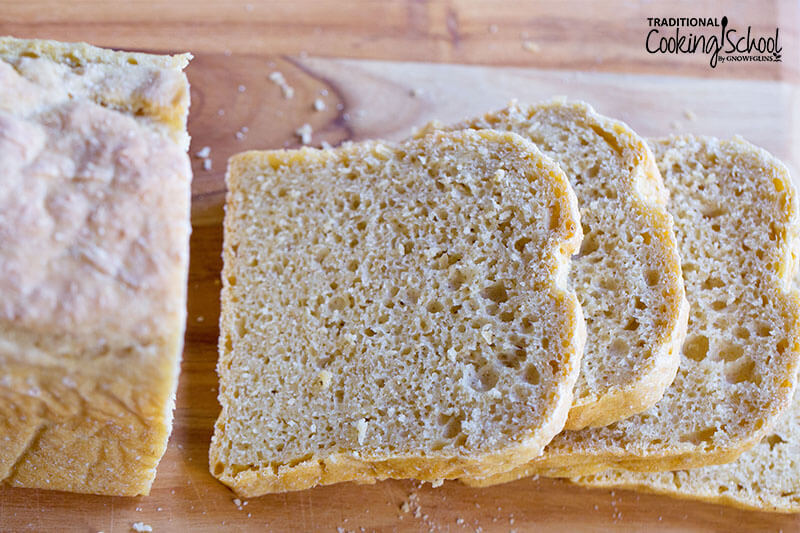
Tip #1: Cook at home.
These are foods you can make instead of buy to save a bunch…
- sourdough bread, English muffins, or crackers
- jerky
- fermented foods like pickles, carrot sticks, or sauerkraut
- actually-healthy-for-you natural sodas like Kombucha or water kefir
- your own herbal coffee (in case you are buying it)
- homemade sports drinks for hydration and electrolytes
- your own toiletries like soap, deodorant, or toothpaste
- tomato sauce
- salad dressings like creamy ranch dressing and homemade vinaigrette
- condiments like ketchup, mayo, mustard, hummus, or jam
- snacks like dried fruits, trail mix, granola bars, homemade Larabars, and homemade popcorn
- breakfast cereal and granola
- Instant Pot raw milk yogurt
- homemade cream of vegetable soup so you can ditch canned foods
- homemade broth to stretch your meat and bones farther
- seasoning mixes like homemade taco seasoning, gomasio (recipe below), Chinese five spice, za’atar, etc.
Check our recipe database for recipes for these foods and more.
And be sure to grab my free “30-Minute Skillet Dishes” worksheet + videos for using ingredients you already have (even leftovers) to cook a healthy dinner at home in 30 minutes or less!

Seaweed Gomasio
Gomasio is a Japanese-style condiment made from sesame seeds and salt. Gomasio is a tasty way to enjoy beneficial sesame and sea vegetables. Make it at home and save money! Makes 2 cups.
Ingredients
- 2 cups organic raw sesame seeds
- 1/2 cup kelp or dulse flakes (or powder)
- 1 to 2 tablespoons sea salt
Instructions
-
Toast sesame seeds in a dry skillet over medium heat, stirring constantly. Don't let them burn!
-
They're ready when multi-colored brown, fragrant, and they begin to release their oils.
-
Remove from heat.
-
Let cool.
-
Mix with seaweed and salt.
-
Optional: lightly crush in food processor or blender.
-
Put in shaker container or jar.
-
Sprinkle liberally on your food. Enjoy!
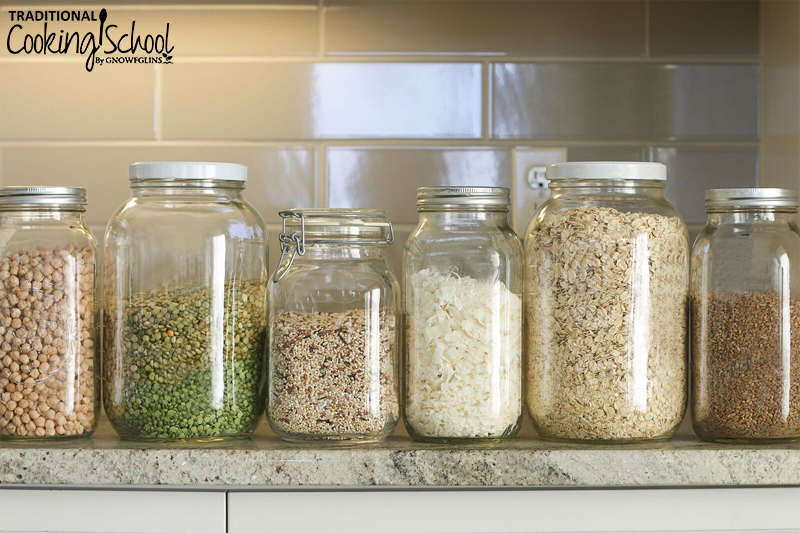
Tip #2: Buy in bulk.
Put some of your food budget toward bulk purchases each month. You’ll pay a cheaper price per pound. You don’t need to buy everything in bulk; just do a few things each month to get ahead a bit more.
Here are foods you can buy in bulk: whole/half beef, bulk pantry items like coconut oil, grains, and beans, and seasonal fruits/veggies.
If they ship to your area, Azure Standard is a great way to buy in bulk!
Check out this video where one of our students, Darla, shares how she and her husband cut their grocery budget in half — from $1000/month down to $500/month — from buying in bulk and following some of the other tips in this post!
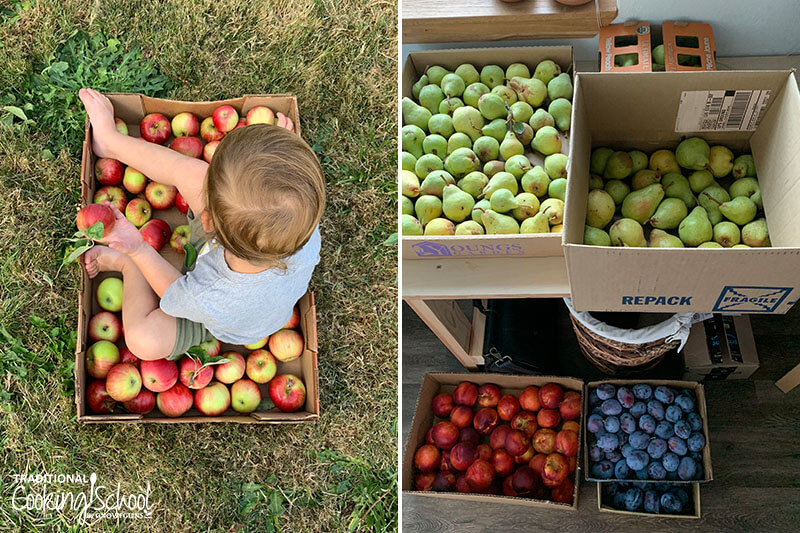
Tip #3: Watch sales and shop in season!
Debbie, you’re already doing this! However, look for sales at more than Earth Fare. How about farm stands that are clearing out seasonal produce? How about a local beef farmer who has bones or organs?
If you shop according to what’s in season, you can often get deals on “seconds” produce from local farmers. Also, U-pick prices usually can’t be beat!
If you have a Costco membership and are a careful shopper (I say this because it’s easy to spend more than you plan), you might consider their foods as “sales”. For example, in our area, the carton of 2 dozen organic eggs is a fantastic price.
There are certain local and online suppliers that I watch (or get on their mailing list) just to be able to pounce when they have a sale.
For instance, Vital Choice has the best, hands-down, canned salmon. It doesn’t taste fishy and it has a great texture. Periodically, they will issue a 10% or 15% off coupon. When they do, that’s when I buy a case (or cases) of 24 cans of salmon. This uses tip #3 (the part of the budget for bulk buying) and I save 10% or 15% on top of that. I stock up on this excellent salmon once or twice per year — at a discount.
We’ve worked out members-only deals with Ancient Grains for einkorn berries and flour. (Details in the Member Area on the Recommended Resources page.)
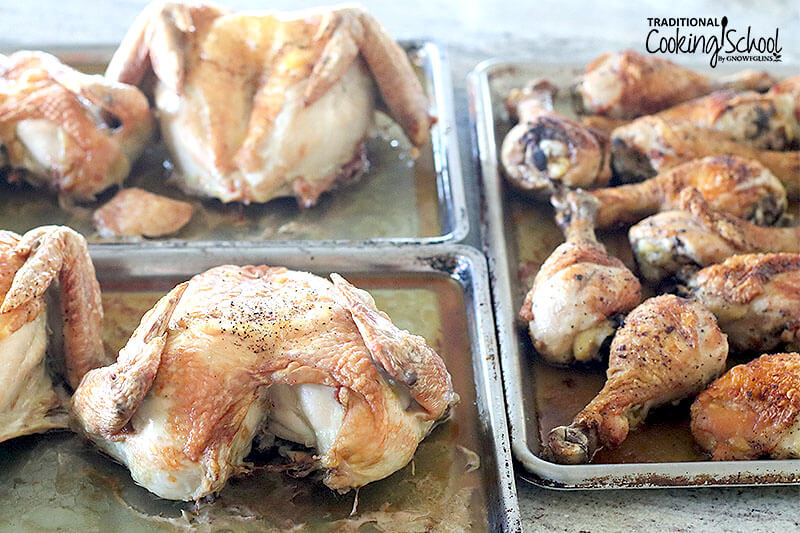
Tip #4: Choose the cheaper form.
Most major food groups have cheaper yet quality ingredients… and their more expensive counterparts. Choose the cheaper form and you’ll save money!
- Protein: ground beef (here are 25+ healthy ground beef recipes), eggs, chicken (use the whole thing! even the bones to make broth) and organ meats are cheaper
- Your baking fat — what’s less expensive for you — coconut oil or butter? Use that.
- Dessert — seasonal fruits and veggies may be less expensive than baking
- Produce — fresh fruits and vegetables are usually cheaper than frozen ones because you have to do the prep work yourself at home
Regarding the last (fat), I love to make homemade mayo with avocado oil but it’s more expensive. So I use 1/4 cup of avocado oil and 3/4 cup of a less expensive oil like expeller pressed grapeseed oil or a milder olive oil.
You can also buy cheap, less nutritious foods but maximize their nutrition via traditional preparation methods. For instance, if you can’t afford raw milk in your area, buy pasteurized whole milk from the grocery store and culture it into probiotic yogurt or kefir (pictured above) before consuming. Or, buy cheap whole wheat flour and use your sourdough starter to turn it into more nutritious and digestible baked goods like English muffins, sandwich bread, or chapatis.
Finally, you can follow the Dirty Dozen/Clean Fifteen lists. Every year, the Environmental Working Group publishes lists of the twelve fruits and vegetables most contaminated by pesticides, and the fifteen fruits and vegetables least contaminated. If you can’t afford all organic produce, at least buy organic anything that falls on the Dirty Dozen list, and buy conventional the rest.
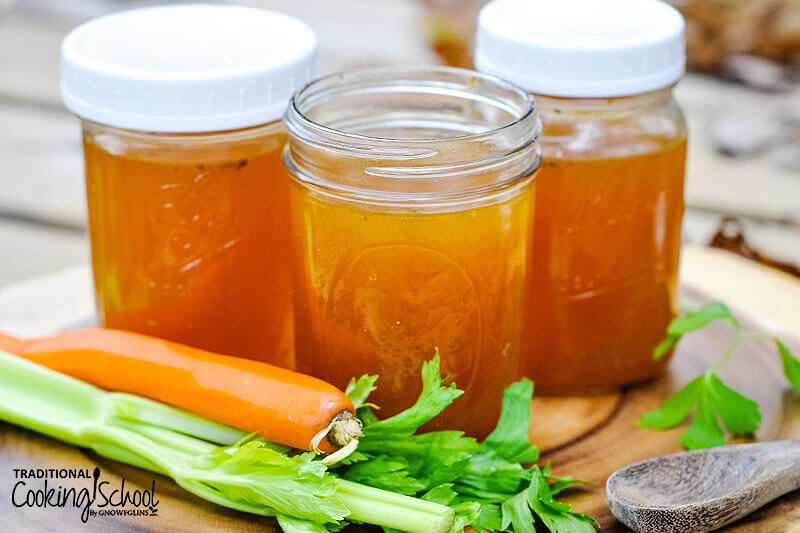
Tip #5: Eat leftovers, and use up your scraps.
 One of the very best ways to save money is STOP throwing away good food! I know, I know… family members balk at eating the same thing again for multiple meals. Did you know you can serve them leftovers and they won’t even know it?
One of the very best ways to save money is STOP throwing away good food! I know, I know… family members balk at eating the same thing again for multiple meals. Did you know you can serve them leftovers and they won’t even know it?
That’s right… take those leftovers and other ingredients you probably already have and throw them together in a meal your family won’t realize was last night’s dinner. 😉
I show you how to do this in my 30-Minute Skillet Dishes worksheet. It’s a simple and delicious 4-step formula that will help you save time, spend less, and eat healthy as you create easy meals in 30 minutes or less. No complicated techniques or recipes… and even if you have picky eaters, follow a special diet, or have a limited pantry! Grab the free “30-Minute Skillet Dishes” worksheet plus videos right here.
You can also look online for “scraptastic” or “zero waste” recipes. These are recipes that call for leftover food scraps that would usually be thrown away. Did you know that you can make apple cider vinegar out of your apple scraps? Or save your veggie scraps in the freezer for homemade vegetable broth (pictured above)?
These are just a few of the many ways you can save your food “waste” from going to the compost, and instead give it new life!
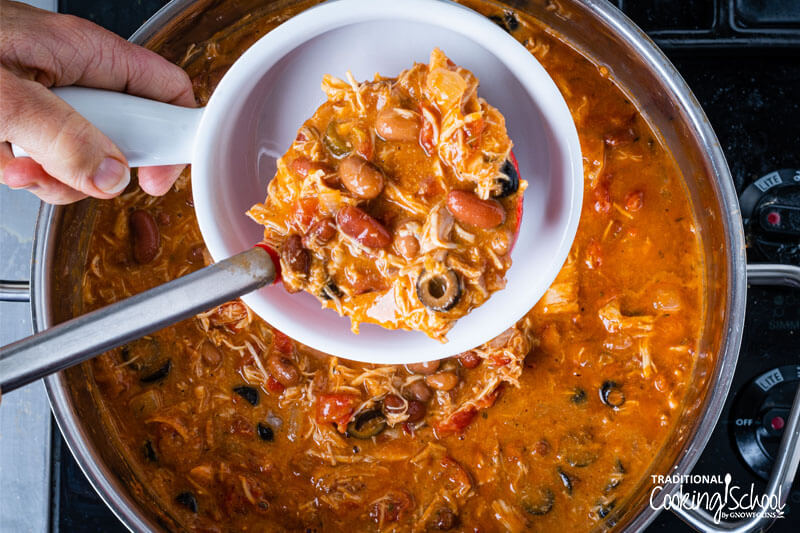
Tip #6: Stretch meats with “filler” foods.
As Debbie and Mariah know, high-quality grass-fed, pastured or wild-caught meat is expensive. Quality animal protein is important… but that doesn’t mean you have to eat it every meal or even every day.
To mitigate the strain on your budget, consider stretching your meats with other foods like beans, oats, or veggies. If you’re making chili (pictured above), stretch your ground beef by adding plenty of beans. If you’re making hamburgers, add 1/4 to 1/2 cup uncooked, rolled oats per pound of beef. Shredded zucchini is an excellent addition to meatloaf! And the list goes on.
Which leads me to my next tip…

Tip #7: Incorporate meatless meals.
You can also substitute meat for other cheaper forms of protein a few times a week. For instance, taco bowls sans ground beef, omelets, or a veggie pizza all utilize yummy yet cheaper forms of protein (beans and rice, eggs, and cheese)! There are tons of delicious vegetarian-style dishes out there — give them a try! Here are a few:
- Chipotle-Lime Quinoa Taco Meat (THM:E meatless meal!)
- How To Sprout Lentils + 3 Delicious Sprouted Lentil Recipes!
- 20+ Savory Quiche Recipes …From Crustless To Dairy-Free!
- Quinoa & Vegetable Soup Recipe (THM:E)
- Anatomy of a Blended Soup
- 34 Blended Soups That Will Change Your Mind About Blended Soup
However, for a healthy, balanced diet, I recommend trying to get at least 50 grams of protein from multiple sources every day. Because it’s harder to reach that without animal protein, don’t hear me saying to give up meat entirely!
Tip #8: Meal plan.
Menu planning helps you stick to your budget in the grocery store (and curb impulsive buying), and helps you think more creatively about the weeks or months ahead. It’s so much easier not to succumb to the temptation of takeout if you’re already planning a delicious and frugal dinner.
My best tip for menu planning is: when you’re making your grocery list and planning meals for the upcoming week, try to think of meals that are different enough that your family won’t get bored… yet utilize several of the same ingredients. You may have to think creatively, and this is where I scour Pinterest and my favorite blogs for ideas, not to mention the TCS archives!
Buying five different ingredients that can be used for three meals is usually less expensive (and less wasteful, since you’re more likely to use everything up!) than buying ten different ingredients for three meals.
Need help creating a menu plan? Here is my simple 4-step formula for creating a rotating menu plan you can use seasonally… if not year-round!
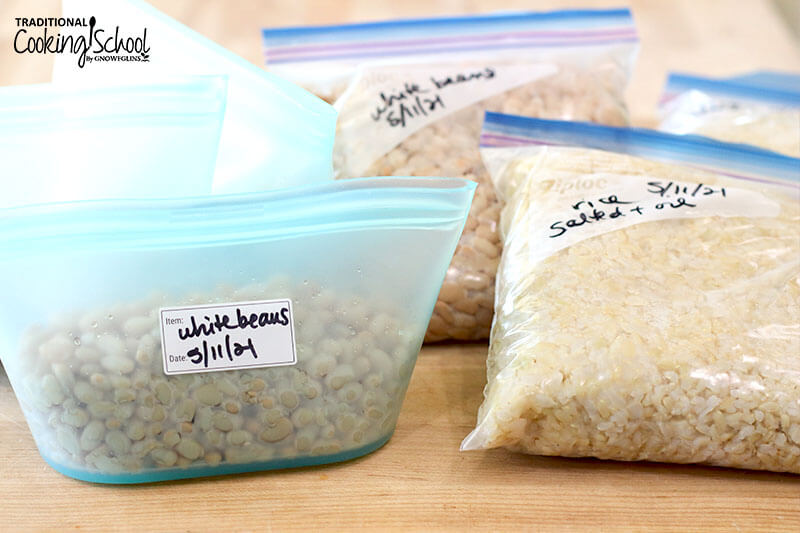
Tip #9: Batch cooking.
If you batch cook and freeze for later, the family is less likely to eat out or turn to convenience foods… which saves money. (You’re also saving tons of time.)
And here’s how to batch cooking while you’re already cooking. If you’re in the kitchen already… let’s say preparing breakfast and dinner… make more use of that time by incorporating batch cooking into your regular cooking time.
Make more of whatever you’re making, be it a side dish or a main dish.
AND… use the time to get ahead with cooking tasks. Feed your sourdough starter. Start soaking beans or rice. Grind flour that you’ll need NEXT time you’re in the kitchen.
It’s that easy! Without spending ANY extra time in the kitchen, you’ve now made your regular time in the kitchen MORE effective and efficient. Getting ahead instead of falling behind.
I do this every day, multiple times during the day. Without adding more cooking time to my schedule, I just get more done within the time that’s already allotted.
I share a lot more batch cooking tips and recipes in our Batch Cooking course that’s part of our “Eat God’s Way” Bible-based cooking program. If you or anyone you know would like to know more about cooking this way, click here for more info.
Tip #10: What can you do without?
Save elsewhere in your budget so you have more available to use for food. This is sort of like tip #1 (prioritizing) but you’re focusing on other areas of your budget to reduce those.
Can you improve in any of these areas?
- eating out
- entertainment, including movies
- extra trips to town (save on gas)
- stay home more
- get out of debt so you aren’t spending extra money servicing the debt
- buy used instead of new
- don’t use paper or plastic products — choose reusables like cloth, metal, or glass*
- learn to repair what you have instead of buying a replacement, if possible (this goes for tools, clothing, etc.)
*Instead of purchasing new reusables, use what you already have laying around! Old towels or sheets can be cut up to use as cleaning rags. Old pickle, jam, or mayo jars can be cleaned and used for meal prepping or fermenting.
Links Mentioned
- Free 30-Minute Skillet Dishes worksheet + videos (use ingredients you already have, including leftovers for quick, healthy, and delicious meals!)
- Instant Pot raw milk yogurt
- H0w Darla and her husband cut their food budget in half (from $1000/month down to $500/month)
- DIY Herbal Coffee eBook
- Homemade Mayo Video
- Traditional Cooking School’s Free Recipe Database
- Vital Choice Salmon — my favorite!
- 4 Steps To Easy Meal Planning
- 10 Traditional Cooking Tips For The New Wife On A Budget… With Basic Pantry & Equipment Lists!
- 14 Ways To Nourish A Large Family On A Small Budget
- What To Buy If You Can’t Afford Organic Meat #AskWardee 066
- 35 Best Real Food Dinners On A Budget (+3 Tips For Frugal Meals!)
- Real Food Sports Nutrition: Part 1
Does this help you figure out how to eat healthy on a budget?
...without giving up the foods you love or spending all day in the kitchen!

2 free books:
Eat God's Way
Ditch the Standard American Diet, get healthier & happier, and save money on groceries...
We only recommend products and services we wholeheartedly endorse. This post may contain special links through which we earn a small commission if you make a purchase (though your price is the same).
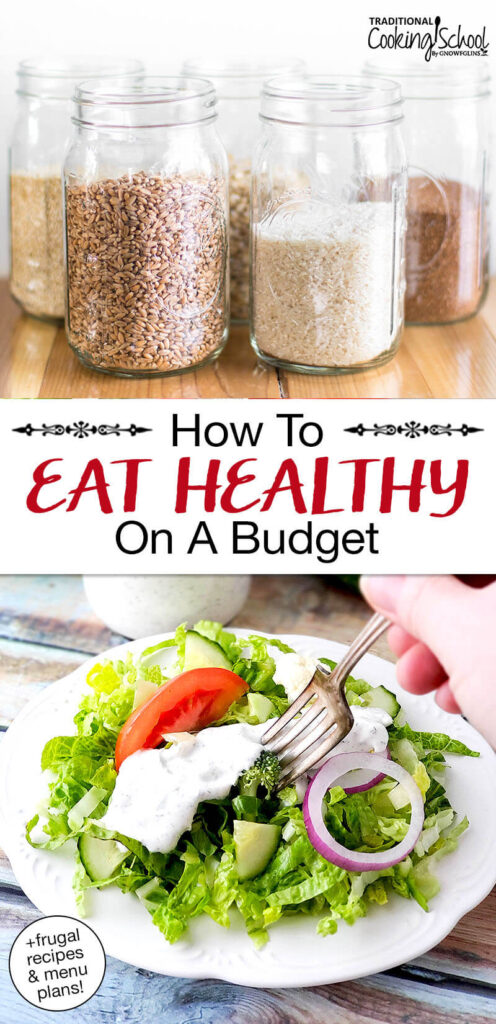
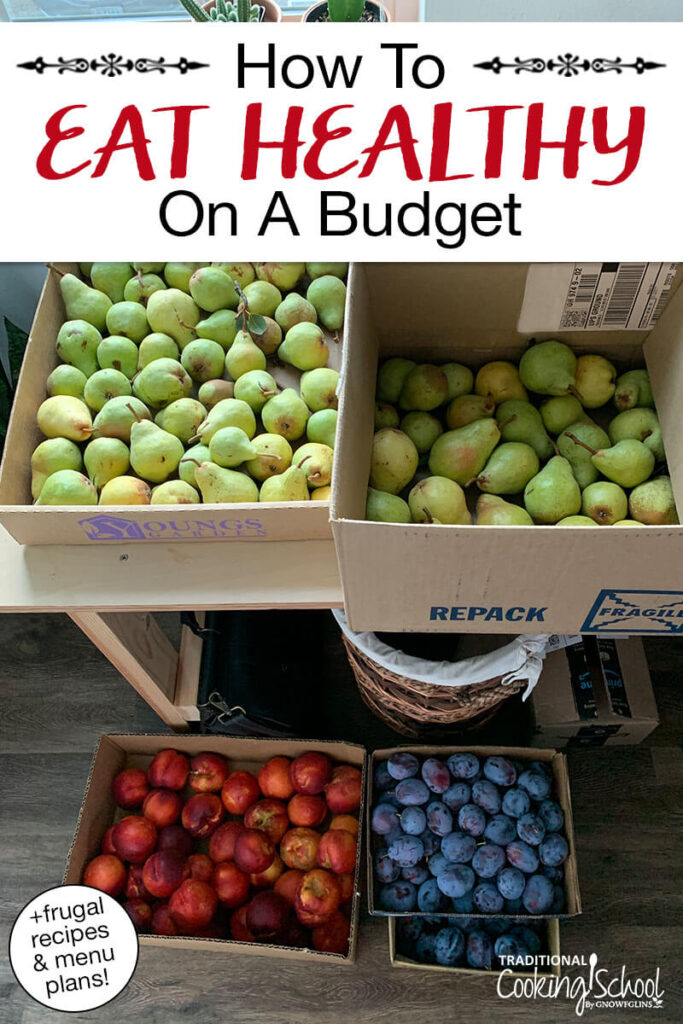
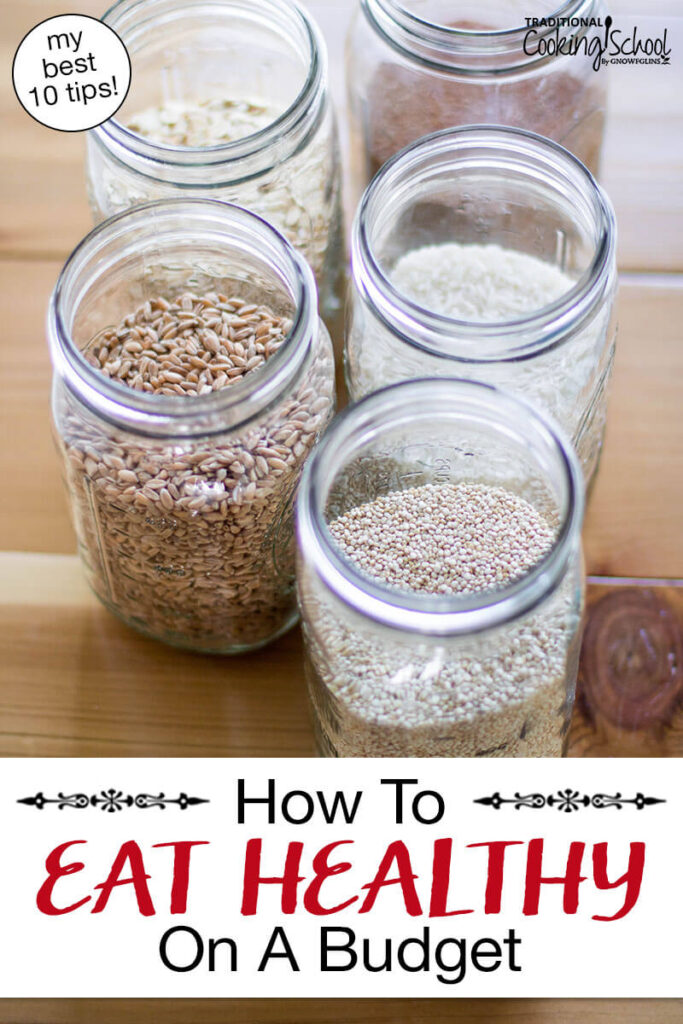
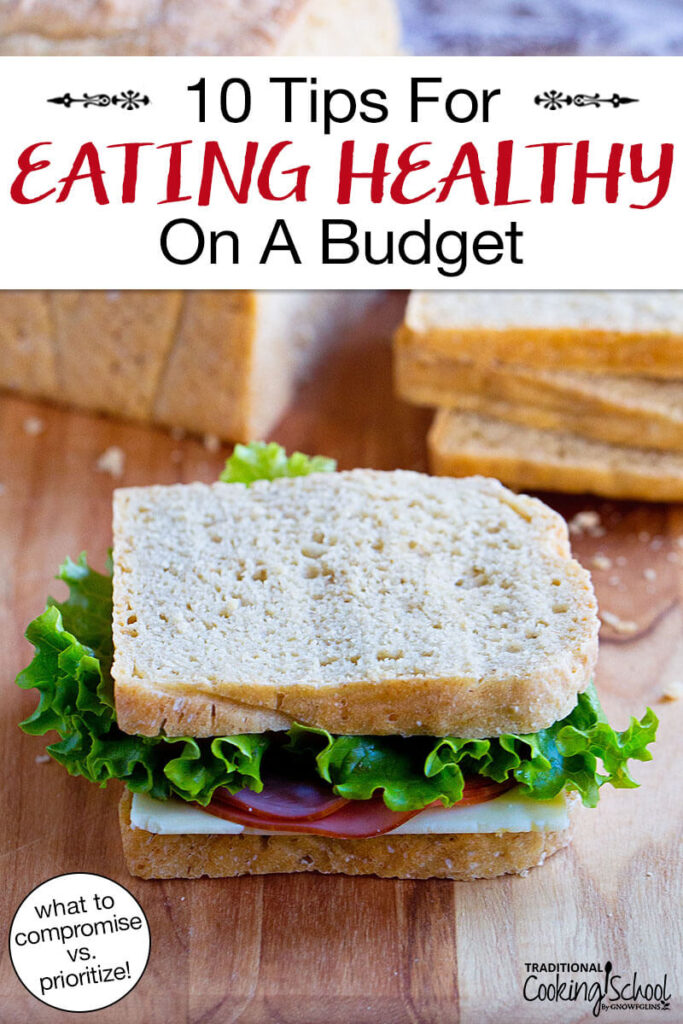
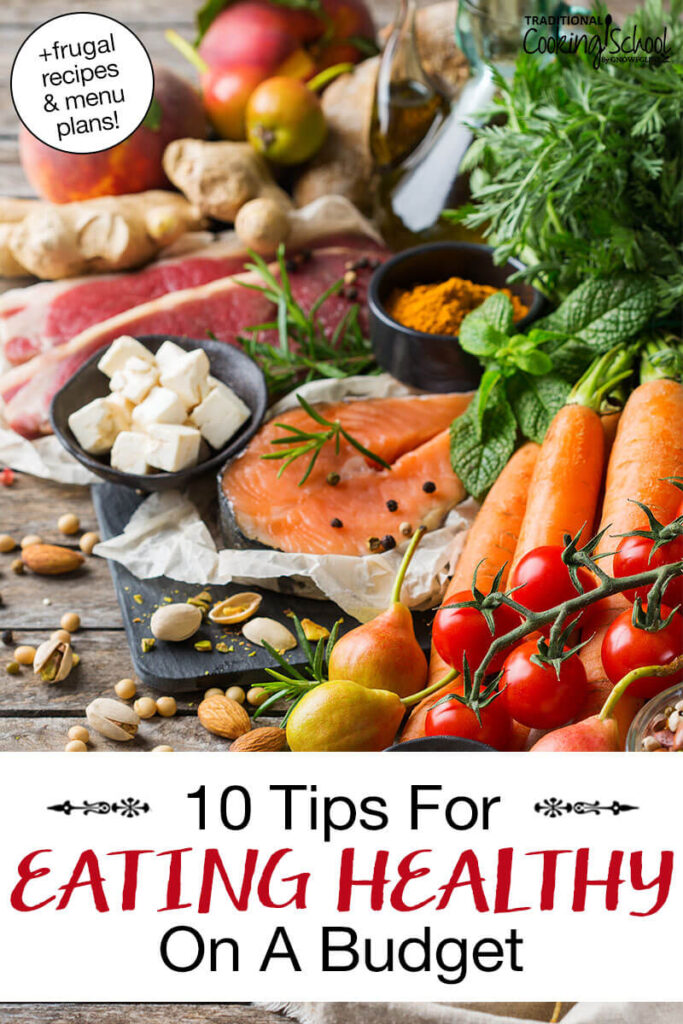
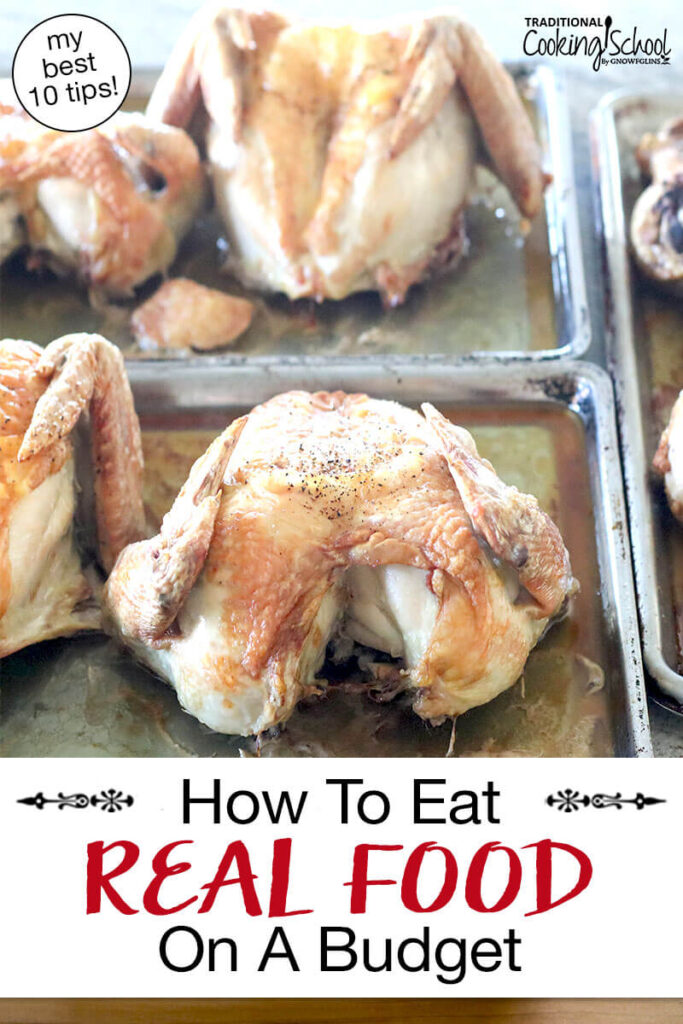
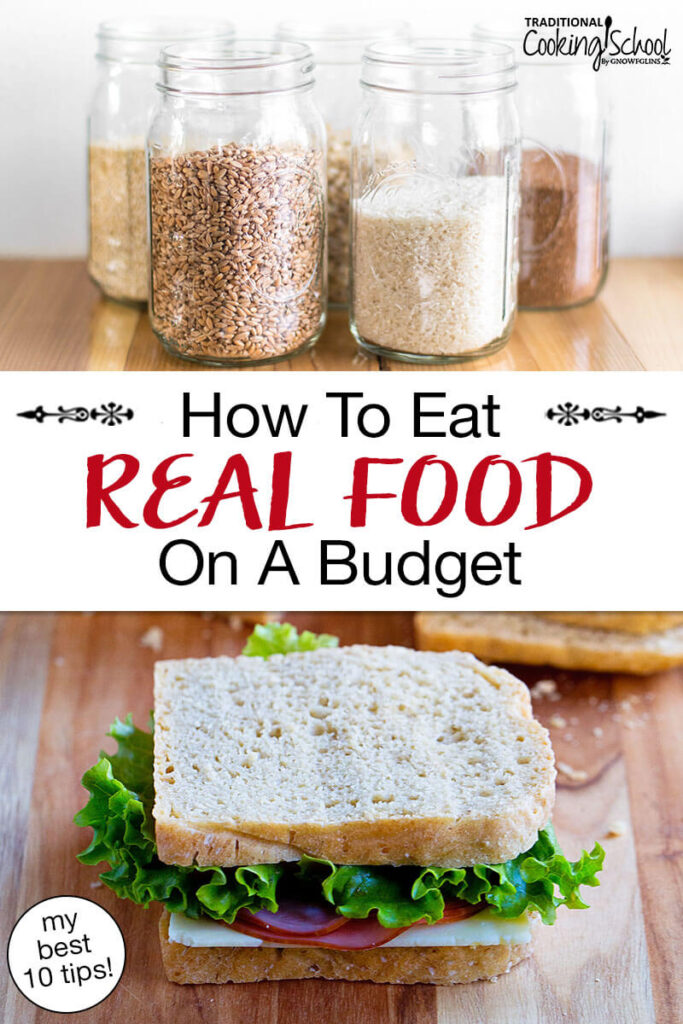
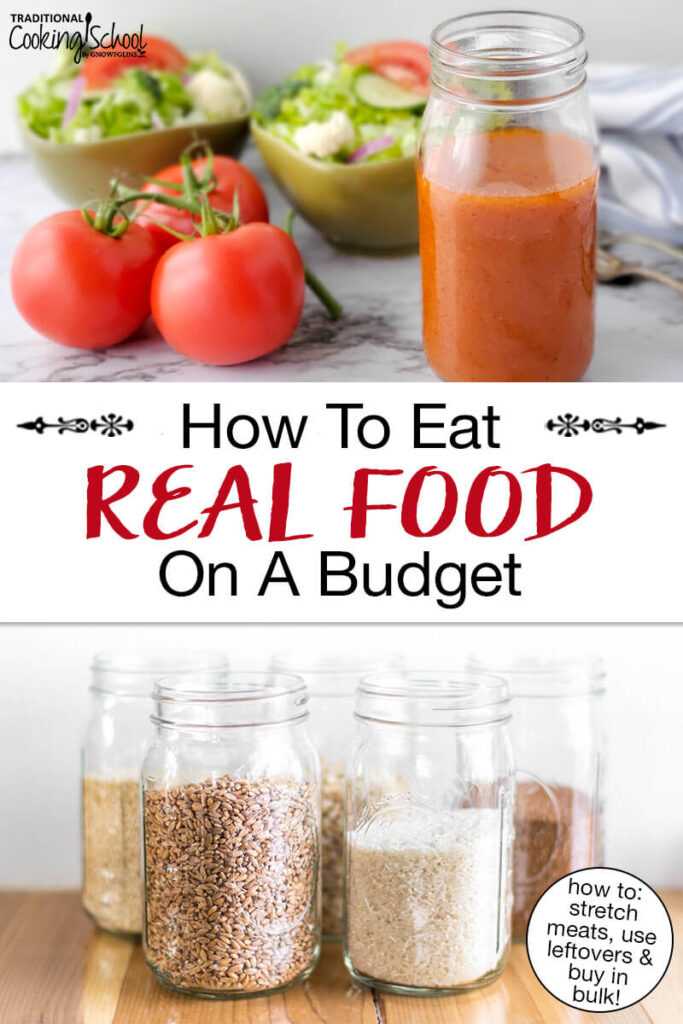
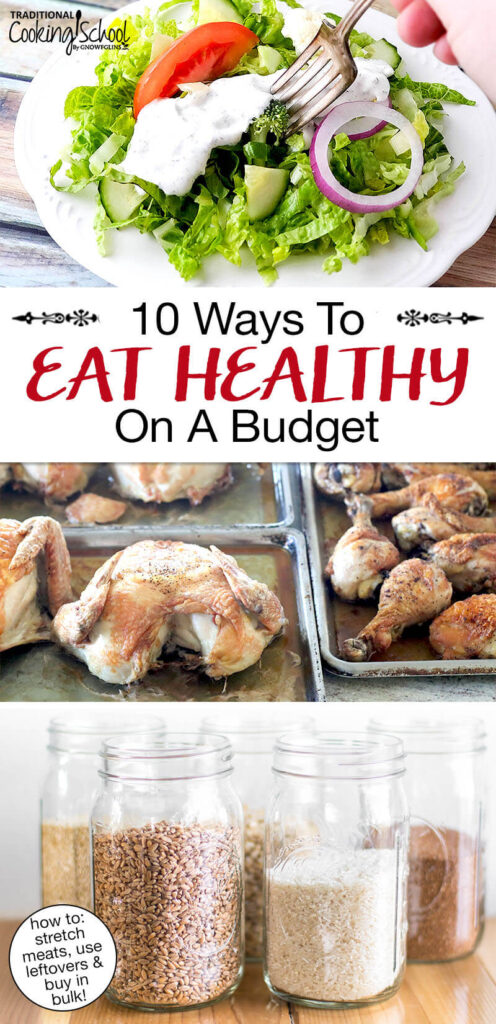
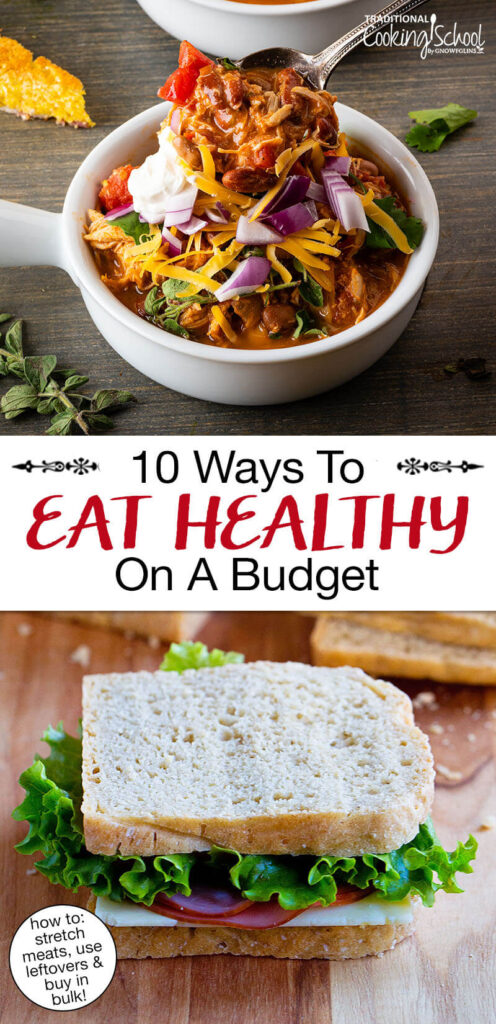
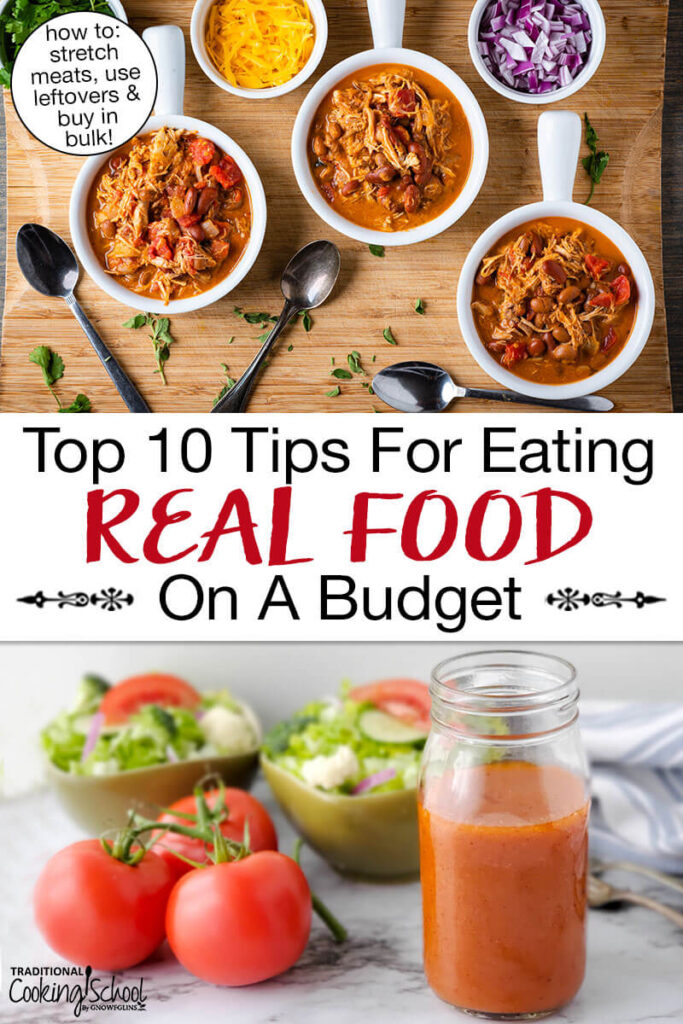
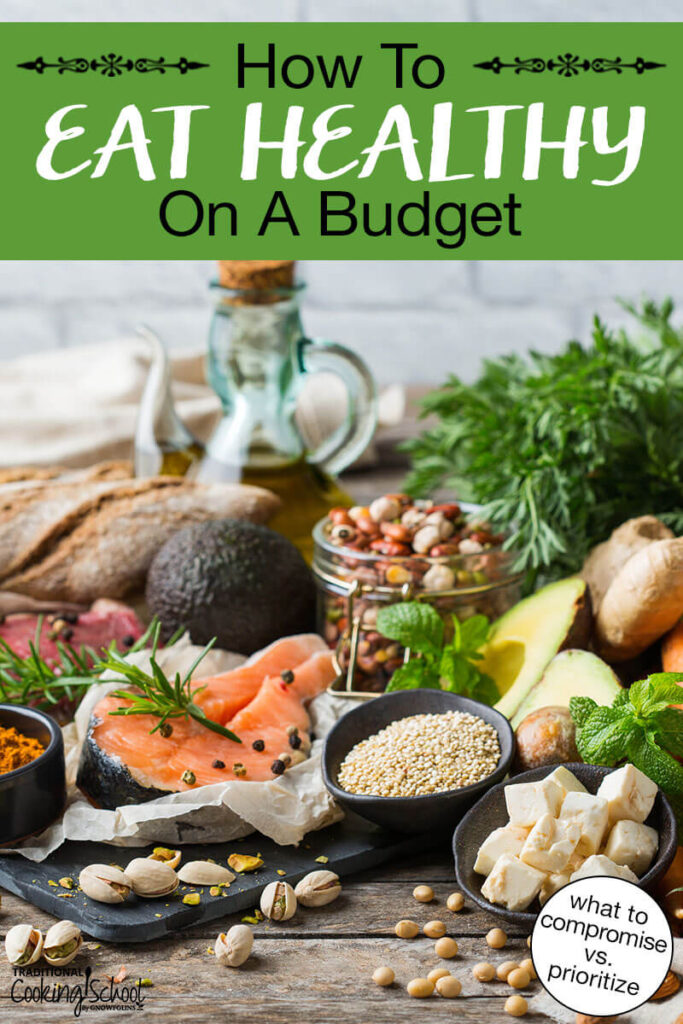
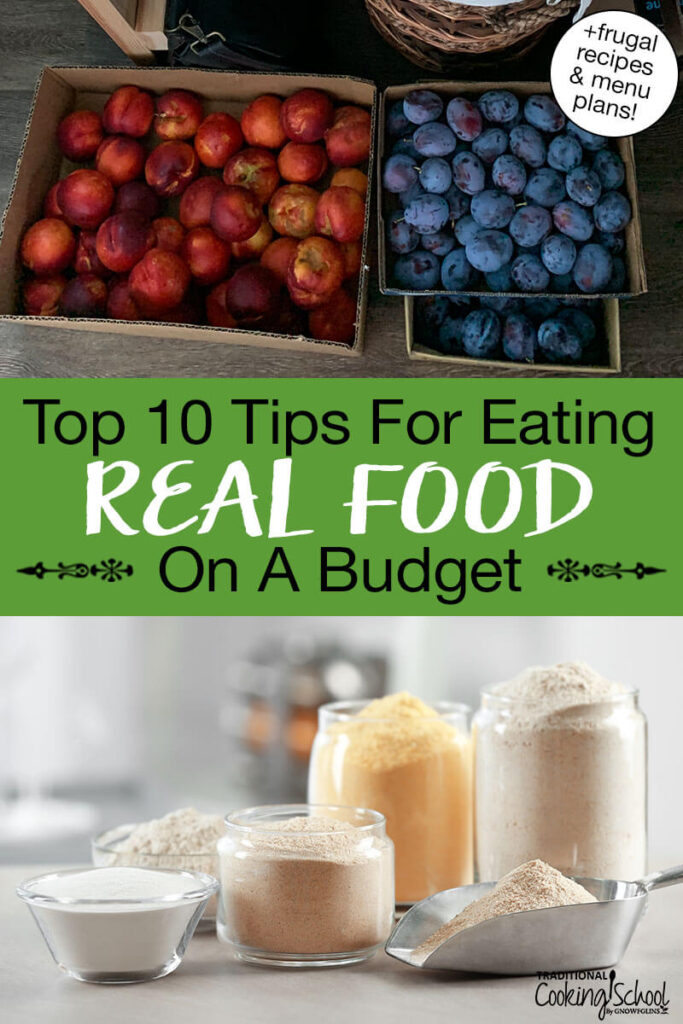
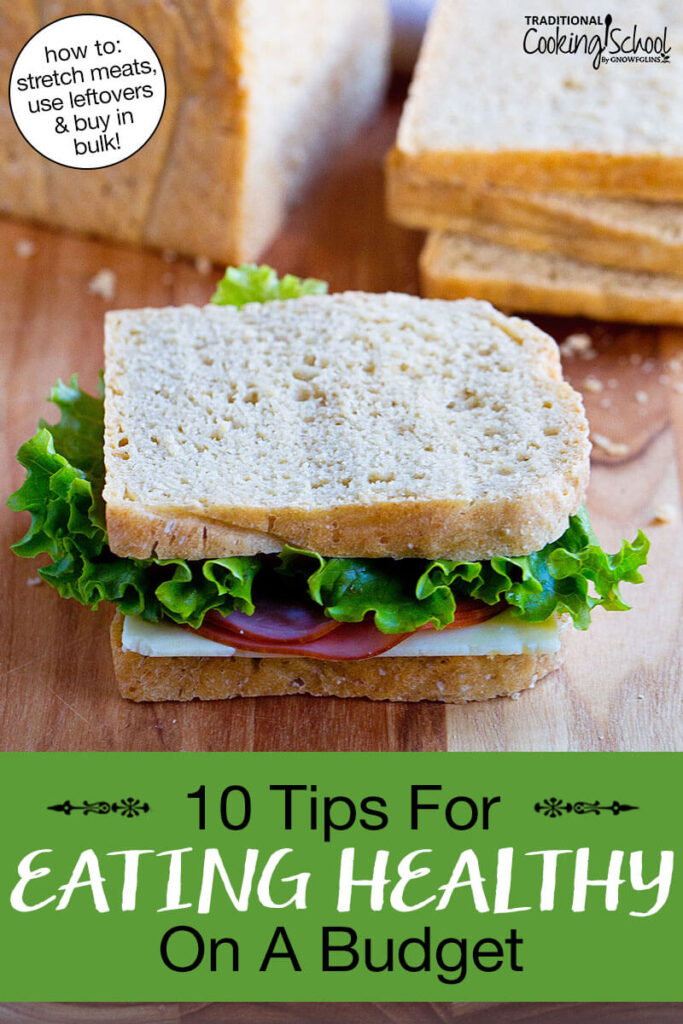
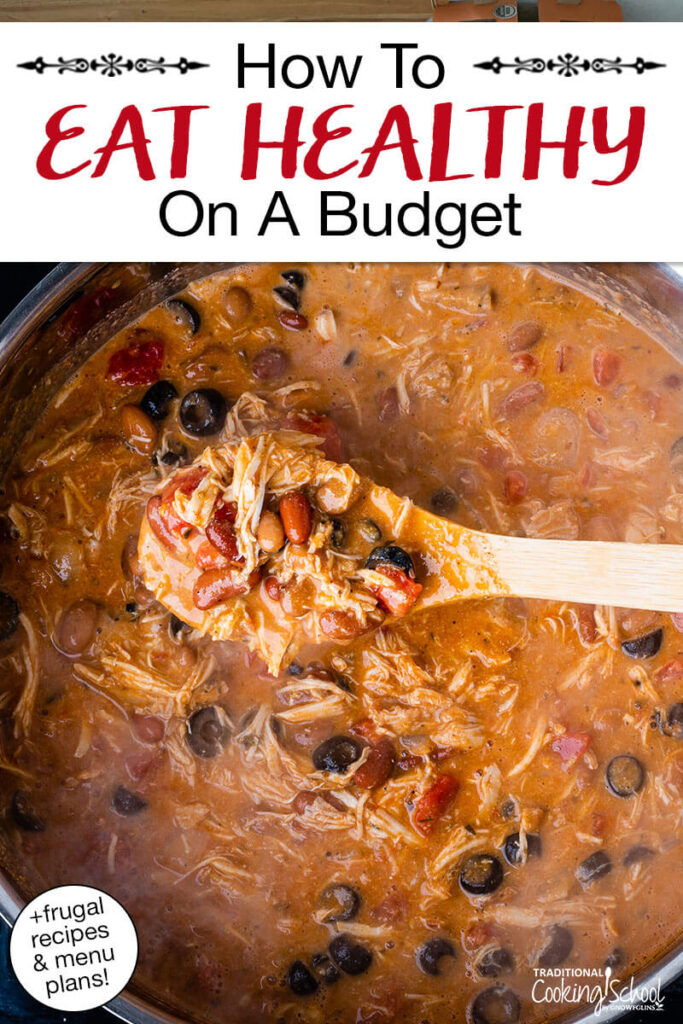
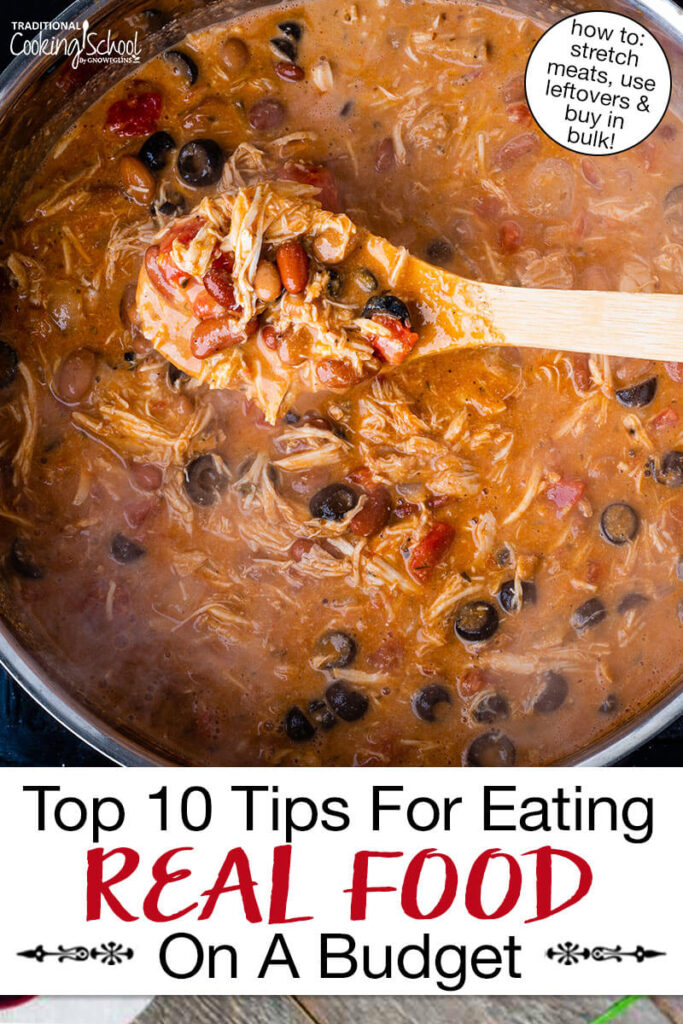


I just got a yogurt culture to start making it with milk that is pasteurized but not homogenized. I have also started making sourdough so the bread doesn’t need yeast, fat,or sugar. I will also be getting a kombucha scoby so I can get extra probiotics in and try to use some to make vinegar
for dressing instead of buying ACV.
Excellent post